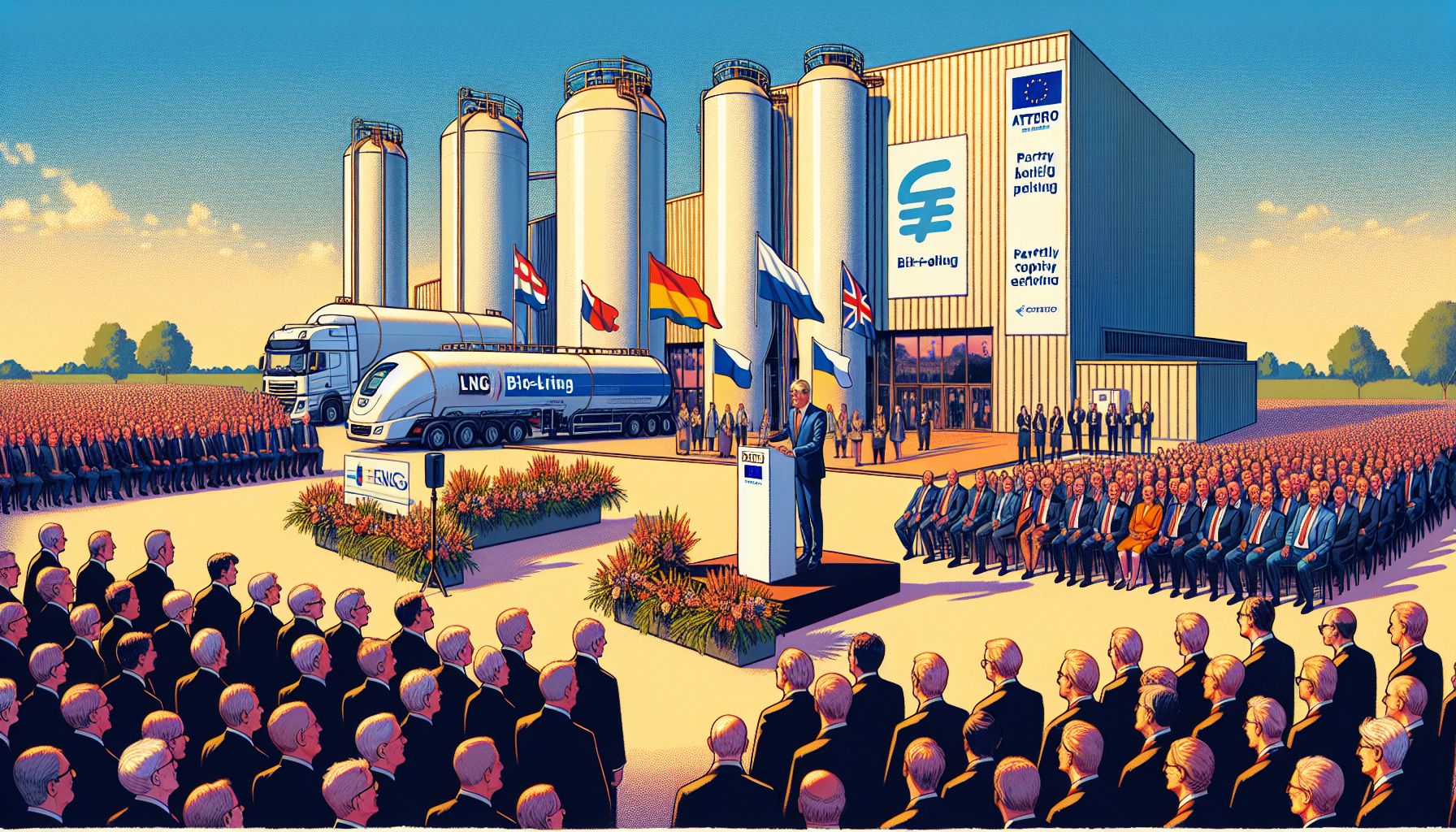Queen Máxima Inaugurates Groundbreaking Bio-LNG Facility in the Netherlands

Wilp, Friday, 13 September 2024.
A new bio-LNG plant in Wilp, Netherlands, capable of producing 2,400 tons annually, has been inaugurated by Queen Máxima. This Attero and Nordsol facility, partly EU-funded, marks a significant step towards sustainable heavy transport and shipping solutions, potentially reducing CO2 emissions by 87,500 tonnes over the next decade.
A Milestone in Green Innovation
The inauguration of the bio-LNG plant in Wilp is a landmark event for sustainable energy in the Netherlands. The facility, developed by Dutch companies Attero and Nordsol, is designed to produce 2,400 tons of bio-LNG annually from biogas derived from vegetable, fruit, and garden waste. This production capability is expected to significantly impact the heavy transport and maritime sectors, where bio-LNG can serve as a cleaner alternative to traditional fossil fuels.
Contribution to Sustainable Transport
The bio-LNG produced at the Wilp facility is projected to enable freight trucks to cover over 10 million kilometers annually, a substantial contribution to reducing the carbon footprint of the transport sector[1]. Additionally, the facility will produce 5,000 tons of liquid bio-CO2 annually, further enhancing its environmental benefits. The use of bio-LNG is particularly valuable in sectors where full electrification is currently not feasible, such as long-distance freight transport, shipping, and aviation.
EU Support and Environmental Goals
The project aligns with the European Union’s sustainability goals, particularly in reducing greenhouse gas emissions for heavy transport. Supported by a €4.3 million EU grant, the plant is expected to lower CO2 emissions by 87,500 tonnes over the next decade[2]. This substantial reduction underscores the importance of bio-LNG as a scalable and cost-effective renewable fuel that can be integrated into existing infrastructure, providing a practical solution for immediate environmental challenges.
Global Context and Future Prospects
The opening of the Wilp facility is part of a broader trend in the adoption of bio-LNG across Europe. For instance, Scandinavian Biogas is set to launch a new bio-LNG plant in Monsteras, Sweden, by the end of 2024, aimed at converting local manure and green mass into liquefied biogas[3]. Similarly, Titan has announced plans to build the world’s largest bio-LNG plant in the Port of Amsterdam, expected to produce 200,000 tonnes of LBM annually by 2025[4]. These initiatives highlight the growing recognition of bio-LNG’s potential to decarbonize various sectors and contribute to global climate goals.
Conclusion
The inauguration of the bio-LNG facility in Wilp by Queen Máxima represents a pioneering step towards sustainable energy solutions in the Netherlands. By producing bio-LNG and liquid bio-CO2 from biowaste, the plant not only supports the EU’s environmental objectives but also sets a precedent for future green innovations. As bio-LNG gains traction globally, facilities like Wilp will play a crucial role in transitioning to a more sustainable and low-carbon future.

